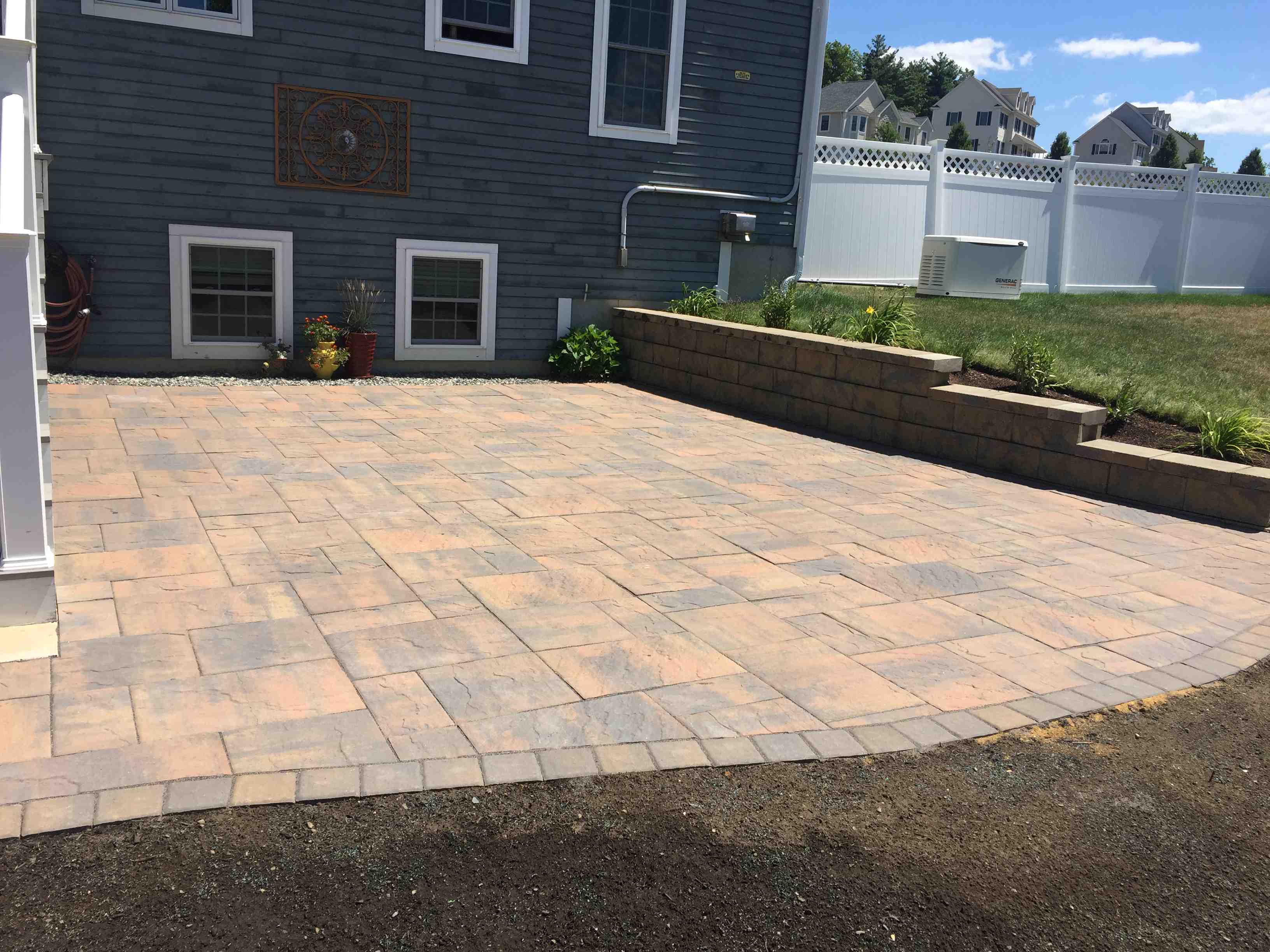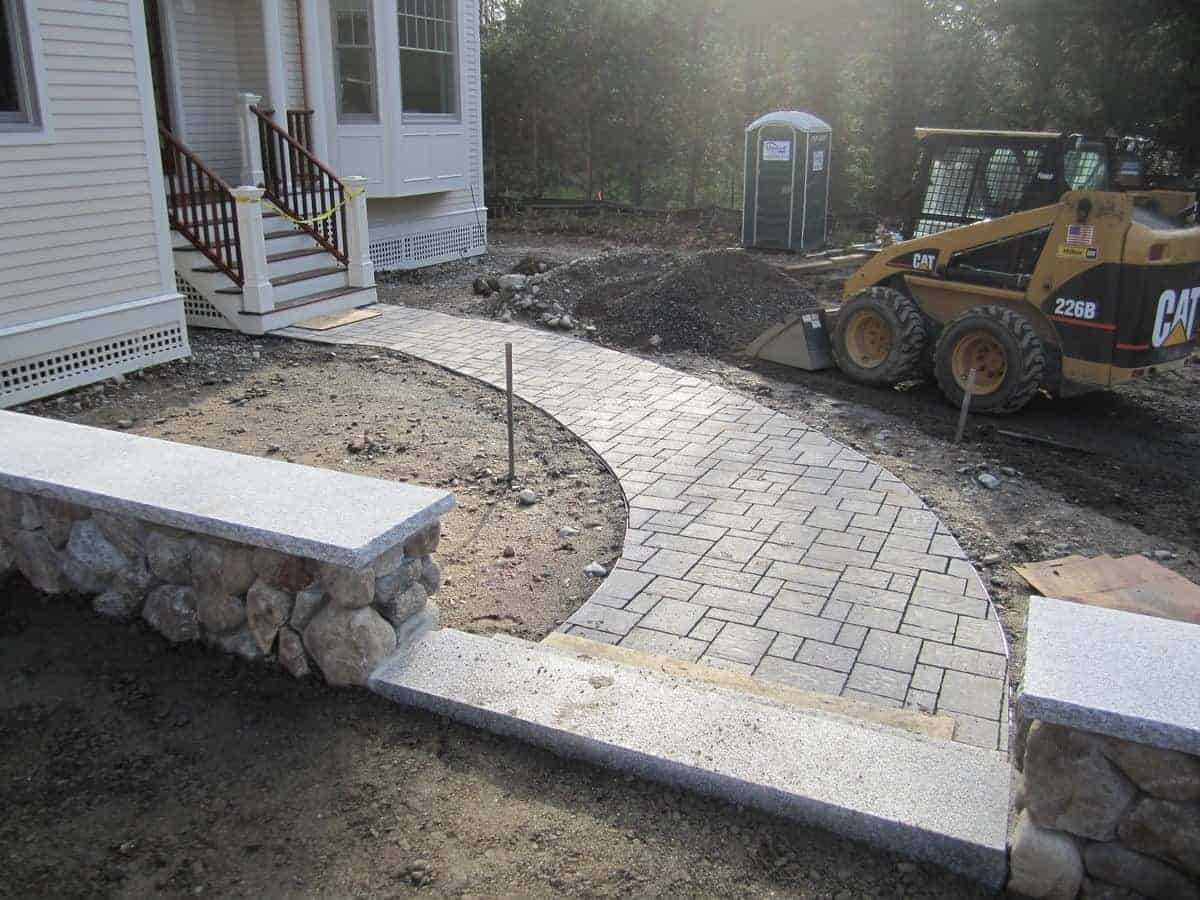Boulder Walls Landscaping: Top 5 Stunning Ideas in 2024
Why Boulder Walls Landscaping is a Rising Trend
Boulder walls landscaping has quickly become a favorite for many property owners looking to improve their outdoor spaces. This trend is fueled by the natural beauty, durability, and versatility these walls bring to any landscape. If you’re considering this for your commercial property or home, here’s why boulder walls landscaping might be the perfect fit for you:
- Natural Beauty: The organic look of boulders adds an authentic feel to any outdoor area.
- Durability: With proper installation, boulder walls can last for decades, resisting the elements with ease.
- Versatility: Boulder walls can be used for retaining soil, creating seating areas, or even as unique decorative elements.
My name is Scott McLeod, and I have over three decades of experience in landscaping, specializing in boulder walls. I’ve seen how these unique structures can transform spaces, adding aesthetic and functional value.

Simple boulder walls landscaping glossary:
– how to landscape a steep slope without retaining walls
– landscape retaining wall ideas
The Benefits of Boulder Walls in Landscaping
Visual Appeal
Boulder walls bring an innate beauty and natural style to any landscape. Their organic look blends seamlessly with the environment, making them a stunning addition to gardens, yards, and outdoor spaces. Unlike concrete blocks, boulders don’t compete with other features; they improve them.

Durability
One of the most significant advantages of boulder walls is their durability. These large rocks are resistant to erosion caused by wind and rain. A well-built boulder wall can last upwards of 100 years or more, outlasting many other types of retaining walls. Historical structures like Hadrian’s Wall, built in 122 C.E., are testament to the longevity of stone walls.
Low Maintenance
Boulder walls require minimal maintenance if constructed correctly. Once installed, they need very little upkeep, saving you time and effort in the long run. This makes them an excellent choice for homeowners who want a beautiful landscape without the hassle of frequent maintenance.
Cost-Effectiveness
Depending on your location, boulder walls can be a cost-effective option. In areas where natural boulders are readily available, the cost of materials can be lower compared to other types of retaining walls. Additionally, the long lifespan and low maintenance requirements mean you save money over time.
Natural Style
Boulder walls offer a unique, natural style that other materials can’t match. Each boulder is different, allowing you to create a one-of-a-kind wall that adds character to your landscape. This versatility means you can design a wall that fits perfectly with the natural surroundings and your personal aesthetic.

Boulder walls landscaping is not just about function; it’s about creating a beautiful, durable, and low-maintenance addition to your outdoor space. Whether you’re looking to prevent soil erosion, create a seating area, or simply add a striking feature to your yard, boulder walls offer a versatile and cost-effective solution.
Next, let’s explore how to choose the right boulders for your landscape.
Choosing the Right Boulders for Your Landscape
Selecting the right type of boulders is crucial for creating a stunning and durable boulder wall. Each type of stone offers unique characteristics that can improve your landscape. Let’s explore the options:
Limestone
Limestone is a classic choice for boulder walls. Known for its strength and unique texture, limestone has been used in construction for centuries. Its versatility makes it suitable for various designs, from rustic to modern.
- Strength: Highly durable and weather-resistant.
- Appearance: Light to medium gray, sometimes with hints of blue.
- Best For: Traditional retaining walls and garden accents.
Fieldstone
Fieldstone is a naturally shaped stone that offers a more organic look. Each piece is unique, varying in size, shape, and color, which adds character to your landscape.
- Variety: Comes in many shapes, sizes, and colors.
- Natural Look: Ideal for creating a natural, rustic appearance.
- Best For: Rock gardens, naturalistic retaining walls, and pathways.
Iron Range
Iron Range boulders are similar in shape to limestone but have distinctive coloring and texture. These boulders can add a unique flair to your landscape.
- Color: Rich hues, often with red or brown tones.
- Texture: Rough and rugged, adding visual interest.
- Best For: Decorative accents and feature walls.
Granite
Granite is one of the hardest and most durable stones available. Its natural beauty and strength make it a popular choice for boulder walls.
- Durability: Extremely resistant to weathering and erosion.
- Appearance: Comes in a range of colors, from light gray to deep black.
- Best For: High-traffic areas and structural retaining walls.
Sandstone
Sandstone offers a softer, more earthy look compared to other stones. It’s easy to work with and can create a warm, inviting atmosphere.
- Texture: Smooth and layered, often with visible strata.
- Color: Typically found in shades of brown, tan, and red.
- Best For: Garden walls, seating areas, and decorative elements.
Quartz
Quartz boulders are known for their sparkling appearance and unique patterns. They can add a touch of elegance and sophistication to any landscape.
- Appearance: Sparkling, with a range of colors including white, pink, and purple.
- Durability: Highly resistant to weathering and erosion.
- Best For: Decorative features and focal points.
Choosing the right boulder for your landscape depends on your aesthetic preferences and the specific needs of your project. Whether you opt for the classic look of limestone, the rustic charm of fieldstone, or the unique flair of Iron Range boulders, each type offers distinct advantages that can improve your outdoor space.
Next, let’s explore the different construction techniques for building boulder walls.
Construction Techniques for Boulder Walls
Building a boulder wall involves several construction techniques, each offering unique benefits. Understanding these methods will help you choose the best approach for your landscape.
Dry Stack Method
The Dry Stack Method is one of the most popular techniques for building boulder walls. This method relies on gravity and the weight of the boulders to keep the wall stable. Here’s how it works:
- Interlocking Pattern: Boulders are carefully selected and stacked in an interlocking pattern. This creates a strong, stable wall without the need for mortar.
- Natural Drainage: The gaps between the boulders allow water to seep through, relieving pressure and preventing damage from moisture buildup.
- Best For: Areas with heavy rainfall or wet soil, as the natural drainage helps maintain the wall’s integrity.
Pro Tip: Use small rocks instead of packed soil behind the wall to improve drainage even further.
Wet-Laid Method
The Wet-Laid Method involves using mortar or cement to bond the boulders together, providing extra strength. This method is ideal for dry environments where moisture buildup is less of a concern.
- Mortar Types: Use Type “M” or “S” mortar for the best results. Type “M” is the strongest and mimics the strength of the stone, while Type “S” is better suited for smaller boulder walls and can withstand excessive moisture.
- Drainage Solutions: In moist environments, additional drainage solutions like drainage stone or pipes may be necessary to prevent water pressure from building up behind the wall.
- Best For: Dry climates or areas where additional strength is needed.
Combination Method
The Combination Method blends the aesthetics of the Dry Stack Method with the strength of the Wet-Laid Method.
- Hidden Mortar: Mortar is applied along the rear of the wall, creating the illusion of a dry-stacked wall from the front.
- Pigmented Mortar: Use pigmented mortar to match the stones and reduce the visibility of mortar lines.
- Best For: Projects that require both natural beauty and additional strength.
Gravity Method
The Gravity Method is another technique that relies on the weight and placement of boulders to create a stable wall. This method is similar to the Dry Stack Method but emphasizes the use of larger, heavier boulders.
- Stable Base: A trench is dug, and a mix of rubble and soil is compacted to create a stable setting bed.
- Inward Tilt: Boulders are placed at an angle that tilts back towards the upper embankment, typically at a 1:6 ratio (for every 6 inches in height, the wall tilts inward by 1 inch).
- Best For: Large-scale projects where stability is paramount.
Pro Tip: Add geotextile material at the halfway point to filter smaller soil particles and improve drainage.
These construction techniques offer various ways to create stunning and durable boulder walls. Whether you prefer the natural look of a dry stack, the added strength of mortar, or a combination of both, each method has its unique advantages.
Next, let’s dive into some creative ideas for integrating boulder walls into your landscape.
Creative Ideas for Integrating Boulder Walls into Your Landscape
Boulder walls can transform your landscape into a stunning and functional space. Here are some creative ideas to inspire your next project.
Variegated Boulder Wall
A Variegated Boulder Wall uses boulders in different hues to create a visually appealing and natural look. Imagine a mix of red, pink, off-white, and soft bluish-green boulders blending seamlessly into the surroundings.
Pro Tip: Soften the look by adding plants and flowers between the boulders. This not only improves the beauty but also helps with erosion control.

Flat Boulder Seating
Turn your retaining wall into a multi-functional feature by designing a Flat Boulder Seating area. This is perfect around fire pits or garden spaces.
- Uniform Size: Use boulders that are roughly the same size and flat on top to provide comfortable seating.
- Curved Design: Consider a curved layout to create a cozy and inviting space.
Pro Tip: Integrate cushions or outdoor pillows for added comfort.

Mixed Material Wall
Combine the natural beauty of boulders with other materials for a Mixed Material Wall. This design can add a modern touch to your landscape.
- Weathered Steel: Pair flat, dry-stacked boulders with custom weathered steel to create a unique look.
- Wood Elements: Incorporate wooden beams or planks for a rustic feel.
Pro Tip: Use materials that complement the boulders to maintain a cohesive design.

Dry Stacked Wall
The Dry Stacked Wall method uses boulders without mortar, relying on their weight and placement for stability. This technique creates a natural and rustic appearance.
- Random Pattern: Arrange boulders of various sizes in a puzzle-like pattern for a more organic look.
- Deep Orange Hues: Fieldstone with deep orange hues can add warmth to your landscape.
Pro Tip: Ensure proper drainage behind the wall to prevent water buildup.

Mortared Stone Wall
For added strength and durability, consider a Mortared Stone Wall. This method uses mortar to bond smaller, round boulders together.
- Varied Shapes: Mix small stones with boulders for a wall with varied shapes and sizes.
- Stable Structure: Mortar adds extra stability, making it ideal for areas with heavy rainfall or soil pressure.
Pro Tip: Use a mortar color that complements the boulders to maintain a natural look.

These ideas showcase the versatility and beauty of boulder walls in landscaping. Whether you prefer a natural, rustic look or a modern, mixed-material design, boulder walls can lift your outdoor space.
Next, let’s explore how to maintain your boulder retaining wall to ensure its longevity and beauty.
Maintaining Your Boulder Retaining Wall
Proper maintenance ensures your boulder retaining wall remains beautiful and functional for years. Here’s how to keep it in top shape.
Regular Inspections
Regular inspections are crucial. Check for any signs of movement or shifting in the boulders. Look for cracks or gaps that might have formed.
- Frequency: Inspect your wall at least twice a year.
- Signs to Watch: Cracks, soil erosion, and water pooling near the wall.
Pro Tip: Use a level to ensure the wall hasn’t started to lean. Early detection helps prevent major repairs.
Drainage Solutions
Effective drainage is essential to prevent water from building up behind the wall, which can cause pressure and lead to failure.
- Gravel Backfill: Use clean gravel behind the wall to facilitate drainage.
- Drainage Pipe: Install a perforated drainage pipe at the base of the wall to direct water away.
Pro Tip: Ensure the ground above the wall slopes away to prevent water from running down and accumulating behind the wall.
Erosion Control
Erosion can weaken the wall and the soil behind it. Implementing erosion control measures is vital.
- Geotextile Fabric: Place geotextile fabric behind the wall to prevent soil from seeping through.
- Plant Integration: Planting vegetation can help hold the soil in place and reduce erosion.
Pro Tip: Use plants with deep roots to stabilize the soil effectively.
Plant Integration
Plants not only add beauty but also help with stability and erosion control.
- Small Plants: Fill pockets between boulders with small plants. This adds greenery and helps bind the soil.
- Native Species: Use native plants that are well-suited to your local climate and soil conditions.
Pro Tip: Choose drought-resistant plants if you live in a dry area. This reduces maintenance and ensures the plants thrive.
By following these maintenance tips, your boulder retaining wall will remain sturdy and attractive, blending seamlessly with your landscape. Next, we’ll address some frequently asked questions about boulder walls landscaping.
Frequently Asked Questions about Boulder Walls Landscaping
Are Boulder Walls Expensive?
Cost can vary widely based on several factors:
- Material Availability: In regions where boulders are plentiful, like Colorado, costs are lower. In areas with fewer natural boulders, expect higher prices.
- Type of Boulder: Different stones have different costs. For example, granite is generally cheaper than moss rock.
- Labor and Equipment: Professional installation often requires heavy machinery and skilled labor, adding to the expense.
For a rough estimate, a typical boulder retaining wall can cost between $10,000 and $30,000 for a 100-foot long and 4-foot high wall, depending on these factors.
How Long Do Boulder Retaining Walls Last?
A well-built boulder retaining wall can last upwards of 100 years or more. Here’s why:
- Durability of Boulders: Boulders are resistant to weather erosion and can withstand immense pressure.
- Construction Quality: Proper construction methods, like dry-stacking or using mortar, ensure longevity.
- Maintenance: Regular inspections and proper drainage help prevent issues that could shorten the wall’s lifespan.
Historical examples, like Hadrian’s Wall built in 122 C.E., showcase the enduring nature of stone structures.
How Do You Maintain a Boulder Retaining Wall?
Maintaining your boulder retaining wall involves several key actions:
- Regular Inspections: Check for cracks, movement, and soil erosion twice a year.
- Effective Drainage: Use gravel backfill and install perforated drainage pipes to prevent water buildup.
- Erosion Control: Implement geotextile fabric and plant vegetation to stabilize the soil.
- Plant Integration: Use small, native plants to fill gaps and add stability.
By following these steps, you can ensure your wall remains both functional and beautiful for many years.
Next, we’ll look into some creative ideas for integrating boulder walls into your landscape.
Conclusion
At McLeod Landscaping, we believe that boulder walls landscaping can transform your outdoor space into a stunning and functional extension of your home. Our team of experts is dedicated to delivering exceptional service, innovative designs, and quality craftsmanship that not only meets but exceeds your expectations.
Why Choose McLeod Landscaping?
Expertise and Experience: With years of experience in the landscaping industry, we bring a wealth of knowledge and skill to every project. Whether you’re looking to create a serene garden retreat or a functional outdoor living area, our team is equipped to handle all aspects of boulder wall construction.
Customized Solutions: Every outdoor space is unique, and we offer personalized landscaping solutions custom to fit your specific needs and preferences. From selecting the right type of boulders to designing a layout that complements your home, we ensure your vision comes to life.
Commitment to Sustainability: We are dedicated to implementing sustainable practices in all our projects. By selecting native plants that thrive in local conditions and employing water-efficient techniques, we strive to create landscapes that are not only beautiful but also environmentally responsible.
Outstanding Customer Service: Your satisfaction is our top priority. We work closely with you throughout the entire process, from the initial consultation to the final walkthrough, ensuring that every detail is to your liking.
Proven Track Record: Our reputation speaks for itself. We have consistently received high praise from our clients for our professionalism, reliability, and the exceptional quality of our work.
If you’re ready to transform your outdoor space with a boulder retaining wall, contact us today to schedule a consultation. At McLeod Landscaping, we’re not just building landscapes; we’re crafting the backdrop for your family’s best memories.

